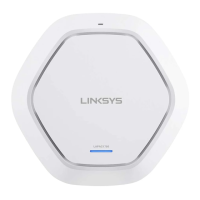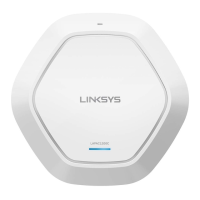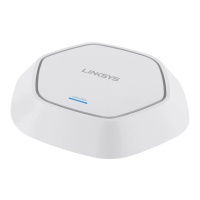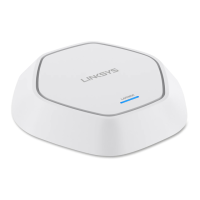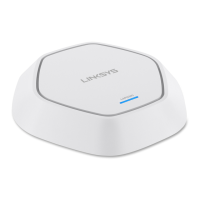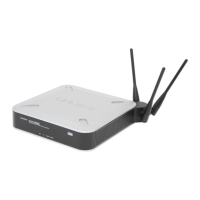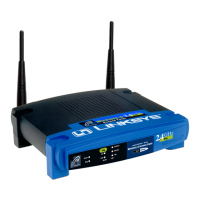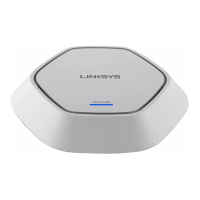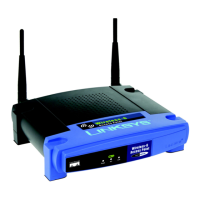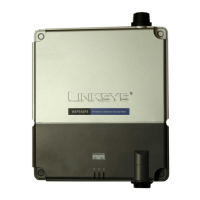57
Section 3: Configuring the Access Point
LAPAC1750PRO Access Point Software User Manual
WPA/PSK on WDS Links
The following table describes the additional fields that appear when you select
WPA/PSK as the encryption type.
NOTE:
In order to configure WPA-PSK on any WDS link, VAP0 of the selected
radio must be configured for WPA-PSK or WPA-Enterprise.
Table 40: WPA/PSK on WDS Links
Field Description
Encryption WPA (PSK).
SSID Enter an appropriate name for the new WDS link you have
created. This SSID should be different from the other SSIDs
used by this AP. However, it is important that the same SSID is
also entered at the other end of the WDS link. If this SSID is not
the same for both APs on the WDS link, they will not be able to
communicate and exchange data.
The SSID can be any alphanumeric combination.
Key Enter a unique shared key for the WDS bridge. This unique
shared key must also be entered for the AP at the other end of
the WDS link. If this key is not the same for both APs, they will
not be able to communicate and exchange data.
The WPA-PSK key is a string of at least 8 characters to a
maximum of 63 characters. Acceptable characters include
upper and lower case alphabetic letters, the numeric digits,
and special symbols such as @ and #.
NOTE:
After you configure the WDS settings, you must click Save to apply the
changes and to save the settings. Changing some settings might cause
the AP to stop and restart system processes. If this happens, wireless
clients will temporarily lose connectivity. We recommend that you
change AP settings when WLAN traffic is low.
NOTE:
Partner WDS AP in the remote network retains its management IP
address acquired from a DHCP server connected to the WDS AP in the
main network even if the WDS link is broken. The IP address is released
when the WDS interface is brought administratively down.
Workgroup Bridges
The Workgroup Bridge feature enables the AP to extend the accessibility of a
remote network. In Workgroup Bridge mode, the access point acts as a wireless
station (STA) on the wireless LAN. It can bridge traffic between a remote wired
network or associated wireless clients and the wireless LAN that is connected
using the Workgroup Bridge mode.
The Workgroup Bridge feature enables support for STA-mode and AP-mode
operation simultaneously. The access point can operate in one BSS as an STA
device while operating on another BSS as an access point. When Workgroup
Bridge mode is enabled, then the access point supports only one BSS for
wireless clients that associate with it, and another BSS to which the access
point associates as a wireless client.
It is recommended that Workgroup Bridge mode be used only when the WDS
bridge feature cannot be operational with a peer Access Point. WDS is a better
solution and is preferred over the Workgroup Bridge solution. The Workgroup
Bridge feature should be used only when connecting to AP devices from a
different manufacturer. When the Workgroup Bridge feature is enabled, the
VAP configurations are not applied; only the Workgroup Bridge configuration
is applied.
NOTE:
The WDS feature does not work when the Workgroup Bridge mode is
enabled on the access point.
In Workgroup Bridge mode, the BSS managed by the access point while
operating in access point mode is referred to as the access point interface, and
associated STAs as downstream STAs. The BSS managed by the other access
point (that is, the one to which the access point associates as an STA) is referred
to as the infrastructure client interface, and the other access point is referred
as the upstream AP.
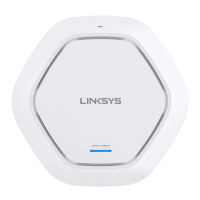
